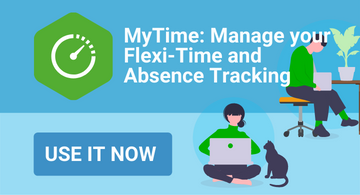Employee engagement does not have to require the budget of Google in order to make an impact. In fact most employees value a strong relationship with their co-workers and managers over material gifts. Managers who invest in developing a strong relationship with their employees will have increased engagement and loyalty.
Driving engagement does not therefore always require a financial output. The truth is, while luxurious team outings and free dry cleaning services are nice, employees value more realistic incentives.
This article will discuss five ways that organisations can keep their employees engaged without an extravagant budget, use the links to jump to a specific section:
- Listen to Feedback with Full Disclosure Transparency
- Create Leaders from Within
- Celebrate Team and Individual Wins as a Whole
- Implement Nutritious and Simple Wellness Habits
- Adopt Flexible Working Practices
1.Listen to Feedback with Full Disclosure Transparency
Opening your lines of communication with your employees by asking for their feedback on what they would love is a great way to show that you value their opinions while also learning what would keep them engaged.

This can be done through informal discussions and surveys. Employees are more likely to trust in the future of the company or organisation and in their management if they are kept in the loop about what is going on, internally. The best way for them to understand and learn about this is from senior leadership. All leadership levels need to practice transparency and open communication in order to foster trust and help build engagement in employees.
2.Create Leaders From Within
An employee who is empowered to control decisions in their daily tasks is more dedicated to producing quality results. This is due to the fact that their name is tied to the work they do and the decisions they make.
Companies and organisations can make leaders through guidance, available support, and clarity around expectations and processes. Once an employee has a clear understanding of what the bigger picture is, they can establish their own path in order to achieve it.
An effective way of doing this is by documenting business processes. By recognising employees as subject matter experts and enabling them to capture their processes using process mapping, you can encourage people to take ownership of their tasks.
Once this has been done by all the teams in an organisation you have captured your whole organisation's end-to-end processes. These should then be made available to all employees to allow them as when people can see all of an organisation's processes they can best find their role within them. More information and how to get the best results with this can be found here.
An employee who has an end goal will remain engaged and hardworking as they strive to achieve their objectives with their managers by their side. Managers can make leaders from within by investing more time in employee development and teaching the necessary skills needed to excel in their position. This doesn’t only boost the confidence of employees but also create unwavering loyalty to the company and managers.
3. Celebrate Team and Individual Wins as a Whole
Expressing recognition and appreciation comes in various different forms. Improving employee happiness and satisfaction means acknowledging even the tiniest details. The top motivator for every employee is receiving high praise from their managers.

There are a lot of free resources and tools available for companies with tight budgets. Such tools, when carefully chosen for the specific needs of the company, can have the same positive impact as the more expensive, paid ones. Regardless if companies choose to deliver praise personally or use technology such as advancesystems.ie/, this is an effective way to boost workplace happiness and employee morale.
Setting aside time in order to acknowledge achievements, company and employee milestones and celebrate anniversaries and new hires is an easy way to make people feel really special. This could be by holding a special lunch, small parties for important milestones or even giving them an afternoon or day off.
4. Implement Nutritious and Simple Wellness Habits
Employees are the company’s greatest asset.
Employees invest in your company’s development, so why don't you invest in their health?
Prior to the millennial generation, employers and managers kept their drawers stocked with available snack options that usually consisted of the most unhealthy and cheapest grocery store finds.
Although these budget-friendly, high volume junk food options would keep the snack bowl full, the impact it has on employee health is damaging and can lead to a loss in productivity, thanks to lethargy.

Nutrition plays a crucial role in an individual’s overall health and wellness. Employees who eat healthier have higher levels of performance, productivity, and energy. In addition, it also means less sick days and reduced stress levels.
Change can start immediately from sweets to granola bars. Employers can buy in bulk in order to get larger discounts or find cheaper options online. They can also promote frequent exercise throughout the workday as well as engaging in some stress-relieving activities.
5. Adopt Flexible Working Practices
In today's world employees expect flexibility in their working lives. Many expect to be able to work at home for at least part of the week and whilst employees are usually happy to work longer when times are busy, they also expect to be able to take time off when work is less busy, or they just need some time off to deal with a personal or family matter. So, the more flexible your working practices can be, the happier and more engaged your employees will be.
Managing flexible working practices can seem onerous, but needn't be when using employee controlled time management software, such as MyTime, which enables employees to take control of their time whilst capturing the accurate records that are also required - thereby keeping everyone happy.
Related Articles:
How to Engage Employees With Simple Process Mapping Techniques
Employee Engagement is Critical Before the BMS Implementation Stage (video)
Employee commitment: Why the Problem May Not be Employees
How to Boost Productivity Painlessly [with MyTime]
This is an updated and refreshed edition of an article originally written in 2019.
Written by Richard Joseph
Richard Joseph is a regular contributor to many sites and mainly focuses on business-related topics. Through his articles he shares his ideas and the latest trends in business and Human Resources.


